(This is a longer version of an article I wrote for Cuisine Digest, a hospitality industry magazine. Cuisine Digest does have an online presence, in the form of a Facebook page, but does not offer the option of reading the magazine online. The article I wrote for Cuisine Digest was the cover story for the August-September 2018 issue; bound by strict word counts, it was a heavily truncated version of what follows).
In the Malayam movie Ustad Hotel (2012), an irate (and ignorant) restaurant patron rejects raw oysters. Dulquer Salmaan’s character, a chef, blowtorches the oysters in the kitchen while the rest of the staff abandons work and gathers around, looking on as he works.
In Chef (2017) Saif Ali Khan’s character calmly accepts that a ‘food truck’ implies cooking in a speeding vehicle. In The Hundred Foot Journey (2014), an Indian chef becomes adept, overnight, at all five French mother sauces (and it’s not even as if he learnt them by being taught by a chef: all his knowledge comes out of a book). This, by the way, is a character who, as a child, was able to appreciate sea urchins—supposedly a very prized delicacy among the middle class of Bombay.
Chefs in cinema tend to be an odd lot. Either idiots or Superman in chef whites: take your pick. There’s no in between.
But before I get around to discussing onscreen chefs, it’s worthwhile to examine this particular genre of cinema a little closely.
Culinary cinema, as some call it, has been around for a long time (the earliest film I’ve seen which has food play an important role is the 1936 French comedy The Baker’s Wife, in which a baker stops baking bread after his wife runs away with another man). Even in the 80s and 90s, there were some classic food films—Like Water for Chocolate (1992), Eat Drink Man Woman (1994), Tampopo (1995) and Big Night (1996)—but nothing like in the 2000s. From South Korea to Brazil, from France to India (and not just Hindi cinema, but Bengali and Malayalam as well), there have been films in which food has played an integral part.
That ‘integral part’ of food could take different forms. Ustad Hotel is one of the few films I’ve seen which touches upon the very basic nature of food, as an essential of life, something necessary to survive.
Most other films tend to look at food as something more—much more—than that.
There is, for one, the film which looks at food in a mystic way, according to it almost mythical, magical qualities. The Mistress of Spices (2005), Like Water for Chocolate, Chocolat (2000) and Woman on Top (2000) are all about food that has the ability to magically change lives. To bend broken hearts, to bring families together, to safeguard people from harm, to change minds. Two stereotypes seem to play out repeatedly in films of this sort: firstly, the ‘food expert’ here, whether a chocolatier, a home cook, a chef or a seller of spices—is always a woman; secondly, the ingredient in question is always an exotic one: chillies, chocolate, rose petals, a panoply of spices.
Then, there are the films where food changes lives and mends them at a more practical level. For example, as a means of catharsis. In Julie & Julia (2009), the lead character finds relief from a mundane job by cooking all the recipes from Julia Child’s Mastering the Art of French Cooking, in the space of one year. Similarly, in Waitress (2007), the protagonist, pregnant and stuck in a disastrous marriage with an abusive husband, destresses by thinking up (and making) pies.
Food is a time-honoured way of bringing people together. Strangers, for instance, in The Lunchbox (2013). Or classmates, in a similar story of lunchboxes, Stanley ka Dabba (2011). Or, more often than not, family. Food as a means of binding together a family is a common trope. In Ang Lee’s last Taiwanese film, Eat Drink Man Woman (and its 2001 remake, Tortilla Soup), for instance, a semi-retired chef diligently prepares massive feasts for his three daughters: at the beginning of the film, an event which the young women detest and find cumbersome, but which eventually becomes a tradition that draws them closer.
In fact, food as the cause of friction as well as what brings a family together appears again and again in several films, especially those from countries where cooking is looked down upon as a profession. In The Final Recipe, Ustad Hotel, and Chef, for example, an older person—father or grandfather—opposes an offspring’s dream of becoming a chef (they would rather their child became a doctor or engineer or something equally ‘respectable’). The foodie offspring, on the other hand, dreams of food as a career, and this is where the conflict arises. In Macher Jhol (2017), this goes to the extreme, with the lead character already working as an engineer before he chucks it up and heads off to Cordon Bleu.
In a reversal, in films like Udon (2006) or Luv Shuv Tey Chicken Khurana, the younger person rejects the family’s food business and sets out on a different path (only, of course, to eventually realize that food is the way to go).
In this context, it’s also worth examining food in its role as a representative of tradition. Food of one’s homeland, even when very far from home, is a means of tying a person to one’s roots: of mooring them to something familiar. This is perhaps why several diaspora films—and not just films about the Indian diaspora, like The Mistress of Spices, Today’s Special (2009), and The Hundred Foot Journey—but also of other ethnicities, especially those famed for their cuisine (Big Night, Dinner Rush, East Side Sushi) focus on food as a means of holding on to roots. Maintaining the ‘purity’ or ‘authenticity’ of the cuisine also becomes an important part of the exercise, which is why the young Indian chefs, trained in (and very skilled in) Western cuisine, in Today’s Special and The Hundred Foot Journey, find themselves returning to their Indian food in the end: that, cinema would have us believe, is where good lies. Tradition, naturally (this is cinema), being ‘good’.
There’s more to this.
There’s the secret recipe, closely guarded, which forms the cornerstone of everything form the often hilarious, heart-warming Luv Shuv Tey Chicken Khurana (2012) and its could’ve-been-twin, Udon (2006), to the almost lyrical tragic South Korean film, The Recipe (2010).
There is food as a critical element in crime. The 2007 Brazilian film, Estomago: A Gastronomic Story, is perhaps the best example of this, though the delightful French comedy, Le Grand Restaurant, about a restaurateur trying to track down a head of state kidnapped from his restaurant, also does have a crime as part of the story.
There is even one notable film which looks at food from a different angle altogether: La Grande Bouffe (1973), about four men who decide to eat themselves to death in a grand weekend orgy. This ranks as one of the most disgusting films I’ve seen—disgusting not only because of the explicit and distasteful sex and the gross toilet humour, but also because of the gluttony that marks the film. It was supposed to be a satire, but it made me feel sick.
Talking of sex in food films, though: there’s a good deal of it, all the way from the grossness of La Grande Bouffe to the carefully choreographed love scenes in Tampopo, where a mob boss makes love to his girlfriend with the help of everything from Miracle Whip to live prawns. There is, in The Baker (2007) the frantic and somewhat hilarious coupling in the middle of a bakery, with both participants ending up covered in flour, eggs, cream and caramel; and there is Like Water for Chocolate’s classic roasted quails with rose petal sauce scene—the dish inflames one young woman so thoroughly that she races out, naked, is caught up by a passing rebel guerilla, and—well, you can guess what happens next.
On a different level of breaking down barriers, there is what I rate as one of the best food films ever, the 1987 Danish film, Babette’s Feast. This one is about an émigré Frenchwoman, previously the head chef at a fashionable and very good Parisian restaurant, who is forced to flee France in 1871. Many years later, she prepares a grand feast for the very puritan friends of the two elderly spinsters she cooks for in a small Danish village. This feast highlights the food = sensuality trope in a different manner: it shows that good food is not an evil (as the bulk of the population sitting down to the feast have convinced themselves), but something to enjoy, to be thankful for. To help build bridges.
So, food in films takes different forms, carries different meanings.
But food films are often not about food alone, and not just about the people who love to eat that food. A lot of food films are as much (or more) about the people who cook that food. Sometimes (as in Like Water for Chocolate, the 2013 Japanese film A Tale of Samurai Cooking: A True Love Story, or the 2018 South Korean film Little Forest), it’s a very talented home cook.
Occasionally, it’s a cook who’s paid, but works in a home environment—the much-loved eponymous bawarchi of the 1972 Hindi hit film, for instance. More often than not, though, the cook is someone who works in a commercial establishment of some sort.
That ‘commercial establishment’ can differ widely across cultures, across languages, across films. It can be a food truck (Chef and its Hindi remake); a dhaba (Luv Shuv Tey Chicken Khurana); a noodle shop (Tampopo, Udon); a roadside, small-time but popular restaurant (Ustad Hotel, the 2014 Daawat-e-Ishq), a bakery (The Baker’s Wife, The Baker)—or a fancy, Michelin-star (or similar) restaurant. The last of these is probably also the most common in Hollywood films, appearing in several films, from Burnt (2015) to Chef to The Hundred Foot Journey, to the 2007 No Reservations, even the classic animated Ratatouille (2007).
No matter what the type of eatery, culinary cinema uses some standard tropes to weave stories around professional cooks and their food. To examine these, I’m going to overlook movies like Spanglish (2004), which, despite having a chef as protagonist, is not about the professional life of the chef. I’m also going to overlook documentaries like the brilliant Jiro Dreams of Sushi (2011), which, being factual rather than fictitious, are a different kettle of fish.
While there are the expected overlaps with the themes of ‘food movies’, chef movies have certain themes of their own: possibly because food is ultimately inanimate, while chefs are human, with emotions, virtues, vices—all of which can be potential candidates for engrossing stories.
Perhaps the most common trope is the ambitious chef, the chef who wants to be famous, win that coveted Michelin star, get that elusive award, whatever. The chef of Today’s Special, The Hundred Foot Journey, Cook Up A Storm (2017), The Final Recipe (2013), Burnt, and No Reservations—among others—falls into this category. And, most popular cinema being what it is, ambition is a dirty word. It makes chefs break off ties with family, it makes them self-centred and cruel, it occupies their minds and hearts so completely, they cannot focus on the ‘good’. (Macher Jhol’s chef, for instance, doesn’t merely run off to pursue his dream, he even abandons his wife). At its worst, ambition even makes chefs (as in Chef) forget the very soul of their cooking, what made them take up cooking as a career.
Where there is ambition, there is ego. And the ambitious chef’s ego brings him/her into conflict with several standard characters. One is the arch enemy of cinematic chefs, the restaurant critic, wrecking reputations (and equally often, in films like Ratatouille, Chef, and the awful 2011 Love’s Kitchen, eventually becoming friends with the chef).
Another is the restaurateur for whom business is more important than quality, who will serve a risotto-ordering patron a side of spaghetti with meatballs, never mind if the traditional Italian chef nearly bursts a blood vessel at the thought of such culinary blasphemy (this, by the way, is from the Stanley Tucci starrer, Big Night).
Closer home, there is another major opponent of the chef and his/her ambition: the chef’s own family. As I’ve mentioned earlier, the younger generation’s desire to adopt cooking as a profession is cause for friction, as is—sometimes—the cuisine the younger person chooses. In the case of the latter, it is worth citing Dinner Rush as an interesting example of something related to this aspect of the generation gap in culinary cinema. In Dinner Rush, the son is an avant garde chef, a Young Turk who makes fancy (but good) food with champagne and whatnot. On the other hand, there’s his father, who’s set up the Italian restaurant in which they both work, and who is always at daggers drawn with his son over the type of food to be served. The father wants traditional, the son wants nouvelle cuisine.
This is an indication of another common trope in this genre of cinema: tradition versus modernity. Frying pan versus sous vide. The same basic cuisine or culinary tradition, but basic, even rustic, at one end of the spectrum, and with flourishes and innovations at the other. Different films approach this in different ways, but the message through all seems to be loud and clear: tradition is good, modernity is not. As a case in point, there’s the Jean Reno starrer Le Chef (2012), in which our hero, the chef, is egged on (by a restaurateur who doesn’t appreciate his style) to ‘modernize’. An expert in molecular gastronomy is brought in, and proceeds to make a complete fool of himself, with our ‘traditional’ chef winning hands down.
Conflict, therefore, is an essential part of the story. And when we have conflict, we need resolution.
The chef must have a chance to redeem himself, because somewhere along the way he has either sabotaged his own career (Burnt), or an enemy has sabotaged it (Le Grand Chef, 2007). In some cases, there are chefs who have strayed from the path, turning traitor to their traditions. All deserve a second chance, a stab at redemption.
That redemption can come about in different ways—by turning down the Michelin star (The Hundred Foot Journey), by returning to one’s roots (Ustad Hotel, Today’s Special), or by rediscovering the soul of one’s cooking (Chef). Possibly the most popular method of redemption, though, is the competition. And by that I do not mean the rivalry between chefs and restaurants, but a cooking contest, a tournament. This, by its very nature, is designed to make the best chef win (unless there is some underhand trickery at work, in which case that too will emerge and the righteous will be vindicated). Also, because the tournament is invariably something highly visible, possibly also remunerative in the way of hard cash or a much-coveted job, it acts as a stepping stone to success for aspiring chef after aspiring chef.
Le Grand Chef and its sequel, Le Grand Chef 2: Kimchi Battle (2010), The Final Recipe, Cook Up A Storm, Just Desserts (2004), East Side Sushi and even Waitress (where the entire film leads up to a brief glimpse of the pie-making competition that will give the heroine a second chance at life): all are about cooking competitions. Given the popularity of reality cooking shows on television, it’s unsurprising that film makers cash in on this trope.
Those, then, are some of the broader themes of most chef movies. Sometimes, they’re treated well; mostly, not. The problem arises with how the profession itself is depicted: it’s something few film makers get right, because cooking (unlike, say, medicine) is a profession few people think of as being highly technical. What could be so technical about cooking, right? And a chef, as so many characters in film after film—Chef, Cheeni Kum (2007), Ramji Londonwaaley (2005)—say, is ‘a mere rasoiya’.
The problem here lies partly in that people think anybody can cook. You cannot perform heart surgery, build bridges, or even repair computers without being trained for it, but everybody thinks you can run a restaurant without being trained (which is perhaps also why, in real life, so many restaurants open up every year and shut shop within months, because the eager foodie who set it up doesn’t really know what it means to produce food on a commercial level).
But, as anybody with any common sense can imagine, a professional kitchen does not look the same as a home kitchen (here, I’m not talking about the really small establishments that feature in a handful of films: the home baker, for instance, or Sridevi’s laddoo-making housewife/entrepreneur in the 2012 English Vinglish). A spiffy restaurant that churns out vast quantities of fancy dishes cannot be expected to look like your average home kitchen. So what do film makers do?
Show some skilled knife work. Zoom in on some shots of colourful ingredients (preferably being stir-fried, since all that movement, the gloss from the oil and the colourful vegetables makes the screen look really vibrant). Let your chef quickly garnish some gorgeous-looking plates of food with micro herbs and edible flowers.
Spread out spices (how beautifully coloured they are! And if you include dried red chillies and star anise, even pretty shapes!). Pile up packets of spices in neatly-placed baskets on kitchen counters (never mind that that’s a thoroughly impractical thing, which no intelligent chef would do). And hey presto, you’re ready to roll.
Which is all very well for your average film viewer. But anybody who’s ever worked in a kitchen will know, at a glance, that this is all wrong. The very basics are wonky. To return to the example with which I began: how, in a busy restaurant at peak time, can everything come to a standstill while one man cooks? How can a chef, no matter how angry, hurl food and crockery around the kitchen (this happens in many scenes in Burnt)? How can a child be allowed to cook and serve (No Reservations, Love’s Kitchen, Chef)?
And yes. Where are all the other many, many roles a chef plays? Cheffing does not merely consist of cooking (or, as cinema sometimes extends it, to purchasing ingredients or interacting with guests). It consists of so much more. A chef is expected to be so much more than just a cook. He or she is a manager, for instance—of people and of materials. He or she must hire, train, and supervise teams (and, believe me, of all the workplaces I’ve worked in, I’ve never seen one with as unrelieved stress as a restaurant kitchen at peak mealtimes: stress, too, which comes twice a day, often 365 days a year). Chefs also have to control costs: that nonchalant pitching out of ‘a notch below perfect’ food so beloved of exacting chefs in cinema would be frowned upon. They must do reams of paperwork (or its equivalent in soft copies), all the way from purchase requisitions to recipe cards. And what about food trials? If you watch—to give just one example—the Hindi film Chef, you’d think all a chef needed was one idea and five minutes to put together a star dish.
Of course, some film makers do realize that there is a certainly technicality involved in professional cooking, and so they invest some time and resources in depicting a kitchen. For instance, in East Side Sushi (otherwise guilty of a ludicrous assumption, that a novice can become a sushi master in a few months), both lead actors trained at a sushi academy for a few months to fit their roles.
Or (commendable, given that it was an animated movie), all 270 dishes shown in Ratatouille were actually cooked and consumed. There are films which hire chefs and restaurant consultants. Where actors go through cooking classes, and where some extras are really chefs. There are movies where it shows: for example, in Ang Lee’s Eat Drink Man Woman, the opening scene—where a semi-retired chef prepares a family feast—took an impressive one week to film.
But those are the exceptions. I have reached the conclusion that the average film maker, being unaware of the technicalities, focuses on story and acting, puts in some culinary touches, and assumes that their perception of a professional kitchen is accurate.
Since this is a blog about cinema and I shouldn’t do such a long post without offering at least some recommendations, I’m going to list some food films I like. My criteria for including these films was that they should have:
(a) a good or at least fairly entertaining story
(b) a significant presence of food
And (c) no really embarrassing gaffes when it comes to cooking or kitchens
There are films—Le Grand Restaurant (1966) is one, Estomago: A Gastronomical Story is another, as are Luv Shuv Tey Chicken Khurana, Bread and Tulips and Daawat-e-Ishq—which actually don’t have very much of a food focus, but are enjoyable, interesting films nevertheless.
Then, there are films which may not be great as cinema, but which have some really mouthwatering food shots. If you’re enough of a foodie and aren’t too bothered about the quality of the cinema, then you could check these out: Chef (2014; this the Hollywood one); Le Chef (2012); Like Water for Chocolate (1992—though some people rave about this as great cinema too, I cannot stomach the idiocy of the two main characters and the so-called hero’s spineless selfishness); Ustad Hotel (2012), No Reservations (2007), Waitress (2007) and Burnt (2015). Chocolat (2000) also is one film I’m not mad about, though it has a huge fan following. The 2017 Macher Jhol, while it has mouth-watering food and offers a glimpse of a less-than-perfect chef (not when it comes to cooking, but in his personal life), has some odd digressions that didn’t quite float my boat.
But, to end: my list of recommended food movies. Good cinema, good food. These are in no particular order.
Julie & Julia (2009)
Tampopo (Japanese, 1985)
Little Forest (South Korean; 2018)
Cook Up A Storm (Hong Kong Chinese, 2017)
The Final Recipe (Thai/South Korean; 2013)
A Tale of Samurai Cooking: A True Love Story (Japanese, 2013)
Ratatouille (2007)
Udon (Japanese, 2006)
Babette’s Feast (Danish, 1987)
Le Grand Chef (South Korean, 2007)
Eat Drink Man Woman (Taiwanese, 1994)
The Recipe (South Korean, 2010)
Tortilla Soup (2001)
Big Night (1996)
The Chef of South Polar (Japanese, 2009)
This is Not What I Expected (Chinese, 2017)
If you would like to know more about any of these films, feel free to ask! And if you would like to recommend any I haven’t mentioned, please do.

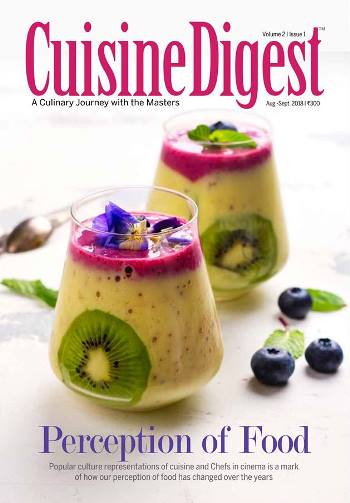


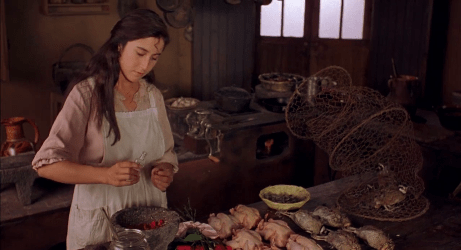
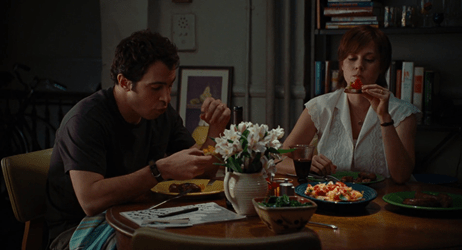
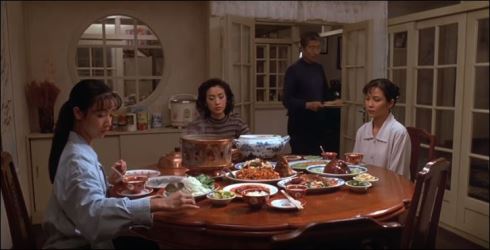


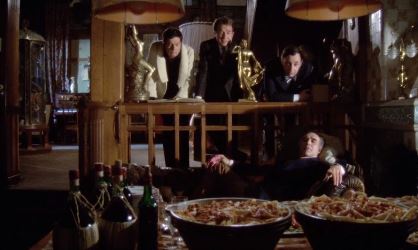
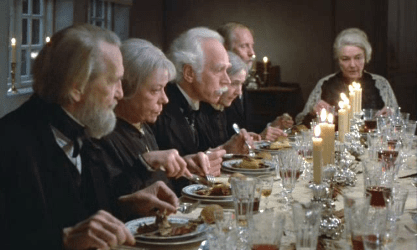


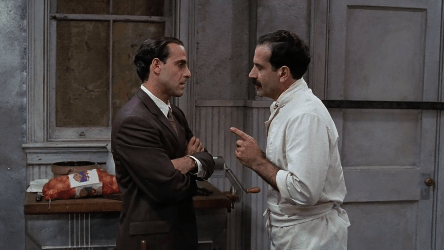



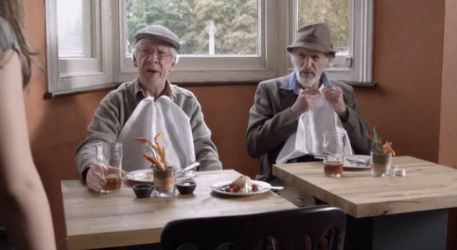
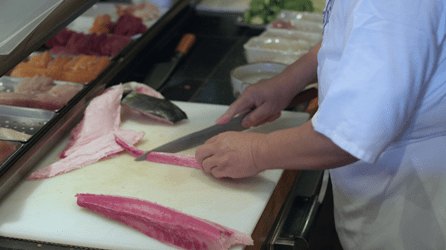

Nice one! And so much research! Btw, you should also check out Salt & Pepper, a Malayalam movie which uses food as a strong motivator for plot movement.
LikeLike
Thank you, Suneetha! I’m glad you enjoyed this. And yes, I do know about Salt and Pepper – somebody recommended it to me while I was doing my research – but despite searching a lot, I couldn’t find a subtitled version. I do want to watch it, though.
LikeLike
This post has enough merit to be read aloud in an food/film-related soiree. I applaud the level of effort and research that must have exerted behind it.
I’d like to recommend two onscreen adaptations of chefs that were straight from lower-middle class Bengali kitchen and delivered teir jobs with aplomb- i) “Golpo Holeo Sotti” (which later remaded in Hindi as “Bawarchi”) and ii) “Adarsha Hindu Hotel” (it was for small-screen).
Both showed cooking and feeding at its unpretentious finest.
LikeLike
Thank you, Jheelam! I’m glad you enjoyed this. :-) And thank you for the recommendations – I will look for those films. I hope I can find subtitled versions. That’s the saddest part of non-Hindi Indian films, especially the somewhat older ones: finding subtitled versions is very difficult. Such a shame. :-(
LikeLiked by 1 person
Couldn’t agree more. :( Bengali comedy films from the olden days were treats to watch.
LikeLike
That said, I think of all old regional cinema, the cinema most likely to have subtitles is Bengali – I have been able to see lots of old Bengali movies simply because subtitled versions (and with good subtitles, too) are easier to find than, say, subtitled Tamil or Telugu films.
LikeLiked by 1 person
Ya it was a pleasant surprise to read that you’ve watched “Machher Jhol”. :) If you like Ritwick Chakraborty’s performance, do watch his another movie ‘Asha Jaoar Majhe”. It has no dialogues and very poignant.
LikeLike
I have a friend to thank for recommending Maachher Jhol – she even told me exactly where I could find it! While there were a couple of things about the film I didn’t really care for, overall I thought it was a good film. And the food in it was spectacular – by far the best food shots I’ve seen in Indian cinema. :-) Perhaps, of course, the fact that I love maachher jhol makes a difference.
Thank you for the other recommendation too. Will certainly keep that in mind too.
LikeLiked by 1 person
:D
LikeLike
Well off-hand only one movie, The Ramen Girl starring Brittany Murphy, comes to mind. I guess it just stuck because just a few months after watching it on TV, the news of her death came. In the movie she goes to Japan to learn the traditional ramen from a ramen chef or something, but why she goes there, I don’t remember.
LikeLike
Oh, yes. I’ve watched Ramen Girl, several years back. I totally forgot about it while doing this round of movie-watching, and remembered it only at the fag end of my research, by which time I was so exhausted with watching food movies (I watched 64 of them) that I couldn’t summon up the enthusiasm to rewatch that one. From what I remember, the character finds herself deserted by her boyfriend in Tokyo, and is given shelter and support by a couple who run a ramen shop – and that’s how she decides to learn to be a ramen chef. But it’s been a long time since I watched it, so my memories of the plot are shaky.
LikeLike
Yes the story was like that. The heroine participates in ramen competition in the end but she does not win, and I particularly liked this twist, as she adds tomatoes and/or corn (not part of the traditional ramen) in it .
And this one’s connected with your older post on food songs, I am giving it here as I just remembered it right now. It’s a Marathi Baal Geet i.e.- Children’s song where kids are imagining a bungalow made of chocolate, with door made of toffee, roof of biscuits, lemon toffees making for windows and porch of peppermint toffees.
The original song was sung by- Yogesh Khadikar, Shama Khale and Rachana Khadikar. The song was written by Raja MangaIvedhekar (don’t try to read the surname) and composed by Meena Khadikar. Here is the version on youtube with animation:
https://www.youtube.com/watch?v=sDUusFs4inI
And here is the lyrics:
https://www.aathavanitli-gani.com/Song/Asava_Sundar_Chocolatecha
P.S.:
1. I can provide you the full translation if you like
2. I also remembered that a few days back I actually read in paper about a resort in Europe made entirely of chocolate where guests can also eat it while their stay.
LikeLike
I had forgotten about the competition in Ramen Girl. I need to watch it again!
Thanks for the Marathi song. Hadn’t heard that before, but yes, fitted right into that post of food songs. :-) Oh, and thanks for that bit about the chocolate resort – I hadn’t heard of that!
LikeLike
So not a single Hindi film on your must watch list? Sad but true?
LikeLike
Yes. Sad. Not because there aren’t good films – I liked Bawarchi, Luv Shuv te Chicken Khurana and Daawat-e-Ishq, for example – but because even these films are not as food-centric as most of the foreign food movies. I mean, if you compare Babette’s Feast, Tampopo, Eat Drink Man Woman, Julie & Julia or almost all the others I’ve listed as recommendations, you’ll see that the level of emphasis on food is completely different.
LikeLike
Madhu,
A thoroughly enjoayable post, and very high quality too. I have read all your food posts. But I didn’t find mention of Kung Fu Panda. I remember that at its core was some profound message about cooking.
AK
LikeLike
AK, thank you so much. I’m glad you liked this post. Your praise is very important to me. And, uff – I wish I’d remembered Kung Fu Panda! I’m cursing myself for that, because I do love that movie, and it does have a profound message about cooking, as well as a good deal about food in general. Even more ironic, around the time I was doing the research for this. my husband (who’s supervising our almost-five-year old daughter’s introduction to movies) was watching the film with her, spread over several days. I would be doing housework, and I’d overhear dialogues, even occasionally hear them discussing it. It completely slipped my mind that this was also a food movie in many ways.
I think I shall make a list of the recommendations people suggest in these comments and rewatch these films (or watch them for the first time) and make some corresponding dishes.
LikeLike
I enjoyed reading it.
As I’m not aware of any of the films, it was a delight to read it.
There was a Marathi movie called Gulabjam.
Which means gulab jamun.
It was completely based on story of a man, who wants to be a chef and how he achieves it finally.
Sonali Kulkarni was the main lead along with siddharth chandekar.
I’ll see if get a video of it.
Here is the trailer
It has subtitles too.
Of course a very short video
LikeLike
This looks absolutely like something I want to watch! I am not too hot on gulabjamuns (I find them too sweet), but that thali – and several other dishes I noticed – look so appetising! Thank you for telling me about this, Anup. I will certainly, certainly look out for this. Since the trailer is subtitled, I’m hoping that the entire film will be subbed too… will look on Netflix. Thanks so much!
LikeLike
You are welcome!
It was a good film, and l enjoyed it a lot. It has no glamour, no lavish sets, just a story told in a simple way. I’m sure you would like it. गुलाबजाम if made a little less sweet, taste very good. So is पुरणपोळी.
You can get a recipe of it as well. I’ll try and find a good one for you.
http://indiangoodfood.com/1659-puran-poli-recipe.html
And do tell me about the film, you liked or not.
:-)
LikeLike
Oh, yes. I know how to make puranpoli (I’m trained in hotel management, you see – even worked in the hospitality industry for four years before I moved on). :-)
Tried doing a search for Gulabjaam, but couldn’t find it. Will try again after some days. I do hope I can get it!
LikeLike